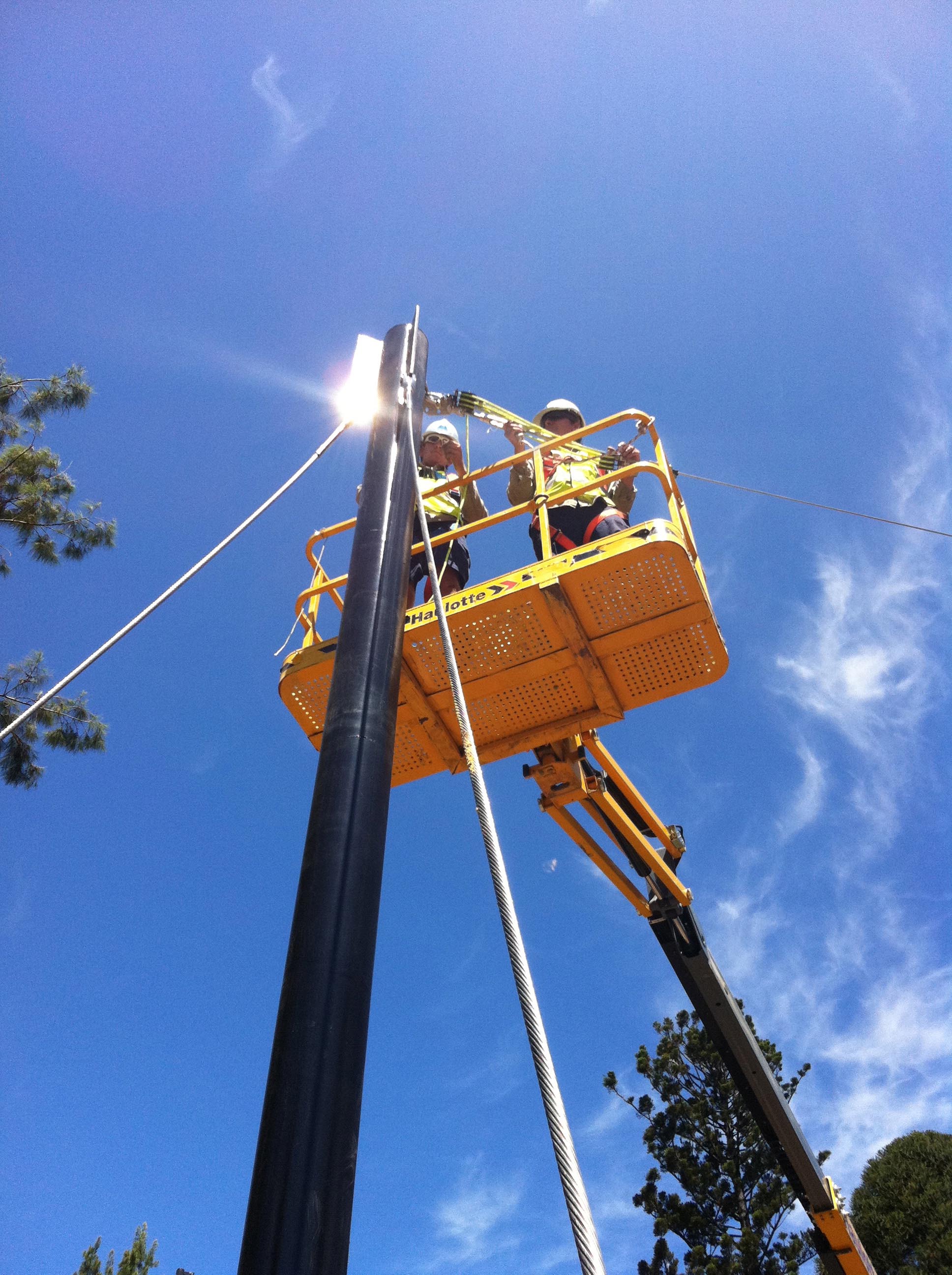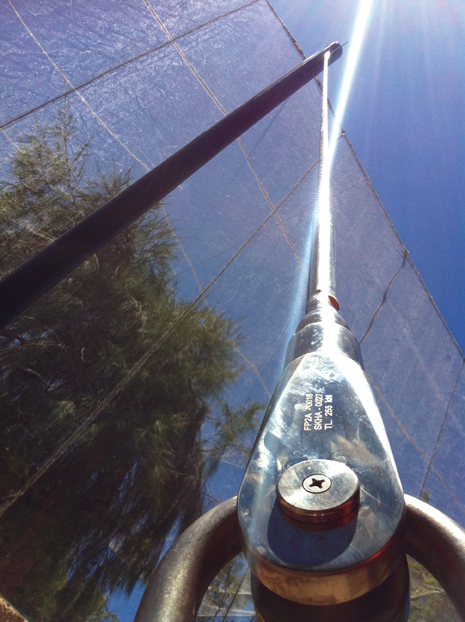
Stainless steel is the material of choice to specify for severe weather conditions.
The overhead netting of Perth Zoo's Australian Wetlands and Penguin Plunge Exhibit was badly damaged when a severe hailstorm and winds of up to 128km/h swept through Perth in March 2010.
During the storm, a tree collapsed onto the netting which was made from a nylon material.
The original concept for this major renovation project was to use stainless steel overhead netting and painted or galvanised steel for the cabling and the majority of other supporting infrastructure components.
However, when ASSDA members Structural Dynamics was awarded subcontractor for the supply and installation of the new overhead netting system, it proposed using stainless steel for all components of the structure, including the cable tension system.
Working closely with Slatter Constructions (head contractor), Thinc Projects (project manager) and Pritchard Francis (structural engineers), stainless steel became the clear choice to provide strength and the crucial ability to withstand severe weather conditions.
Structural Dynamics Managing Director Darren Wills said the team agreed that specifying stainless steel would improve performance, product life cycle and reduce the risk of galvanic reaction.
‘Stainless steel materials break down at a much slower rate than galvanised materials,’ Wills said.
In terms of longevity and durability, stainless steel was the better option given the conditions of the local environment and fresh-water animals.
Slatter Constructions’ Project Manager Rob Murrell added that, on top of providing an aesthetic finish and prolonging the life of the enclosure, using stainless steel for the cables negated the need to ensure separation of different metal types.
Perth Zoo was convinced that stainless steel was the better long-term option and proceeded with stainless steel as the majority materials specification. With a life span of up to 20 years when compared with only up to 10 years using galvanised steel, the increased cost of using stainless was outweighed by the longevity of the product.
The new 91m long x 33m wide x 10m high netting and support structure was completed in early 2012, using the following stainless steel materials:
Backstay column support cables
- 440m of 16mm and 19mm HAMMA Pro Stand 1x19 AISI316
- 48 units of 16mm and 19mm Strudyna P2H Adjusters AISI 316

Netting structural support cables
- 720m of 8mm and 10mm HAMMA Pro Stand 1x19 AISI316
- 56 units of 8mm and 10mm Strudyna AM Adjusters AISI316
Netting support cables
- 3900m of 5mm HAMMA x wire rope 7x19 AISI316
Netting
- 5,400sqm of ClearMesh zoological netting AISI316
- 15,200m of 1.6mm seizing wire 1x7 AISI304
Rodent proof barrier
- 300m of 5mm stainless steel angle AISI316 3000m x 150mm x 5mm
Miscellaneous
- 2,400m of 10mm threaded rod AISI316
- 600 units of 10mm eye bolts AISI316
- 600 units of 5mm turnbuckles AISI316
It was pivotal that the new cable structure could cope with extreme one-in-a-hundred year Perth storms, and the high tensile stainless steel structural cable components were ideal for this design parameter. Meeting a range of cable tensions, the HAMMA stainless steel cables installed are rigid to deal with high tensile loads, but also allow for some give to counter the effect of high winds and other harsh weather conditions. Their grade 316 stainless steel construction provides excellent corrosion resistance.
ClearMesh - often used in zoological enclosures globally - was applied to the overhead netting and netting mesh wall that separates the Wetlands from the Penguin Plunge Exhibit within the enclosure. With mesh openings of 2mm, the lightweight and flexible characteristics
of the ClearMesh display a transparent look that complements the landscaped environment and allows for give in case birds fly into the mesh.
case birds fly into the mesh.
Wills said the structure was designed to retain wildlife inside the enclosure and provide a close-to-natural environment for the Australian wetlands wildlife and penguins to thrive in. This resulted in an extremely high level of detail being specified, with stainless steel seizing
wire used every 5mm on the seams of the stainless netting. Over 38,000 hand seizes were performed by the Structural Dynamics team.
As the enclosure was an established site prior to the storm, Perth Zoo required that construction had limited impact on the existing landscaping to assist with animals being reintroduced to their former habitat. Murrell said careful planning between Structural Dynamics and Slatter Constructions ensured the works were completed without harm to the existing vegetation and surrounding areas.
Further construction and landscaping works included a new timber deck walkway for visitors, a limestone block wall and vermin barrier to the perimeter of the wetlands area, an upgraded filtrations system and refurbishment of the existing penguin pool and surrounds.
The renovated enclosure has since survived the June 2012 storm with winds of up to 140km/h, and the cable netting structure and supporting infrastructure today remains as built.
Images courtesy of Structural Dynamics.
This article is featured in Australian Stainless magazine, issue 52.